The "DIY old driver series" is still in its ninth period. It has been a long time since it was broadcast. In this issue, the old driver came to chat about the QD display that recently showed more fire on the monitor. What kind of improvement in the performance of the Quantum dot display is so good? In front of high energy, old drivers lead the way, quickly hit the card on the train!
[PConline DIY old driver] The recent display industry, quantum dot display technology fire, the major manufacturers are rushing, have begun production of quantum dot displays, but the display industry can not be accomplished overnight, QD displays turned out to be, how good or bad, calendar Formidable, today brings you to see what quantum dots are and what quantum dot displays are.
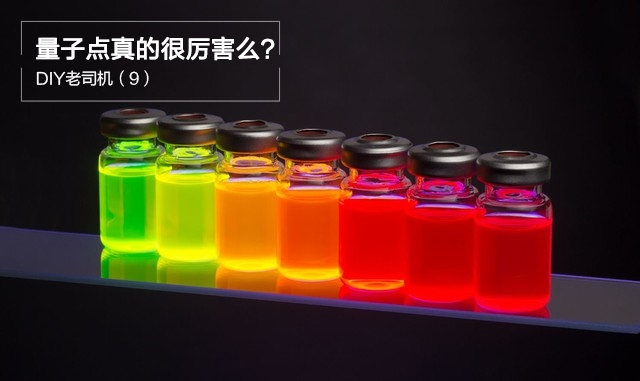
What is a quantum dot
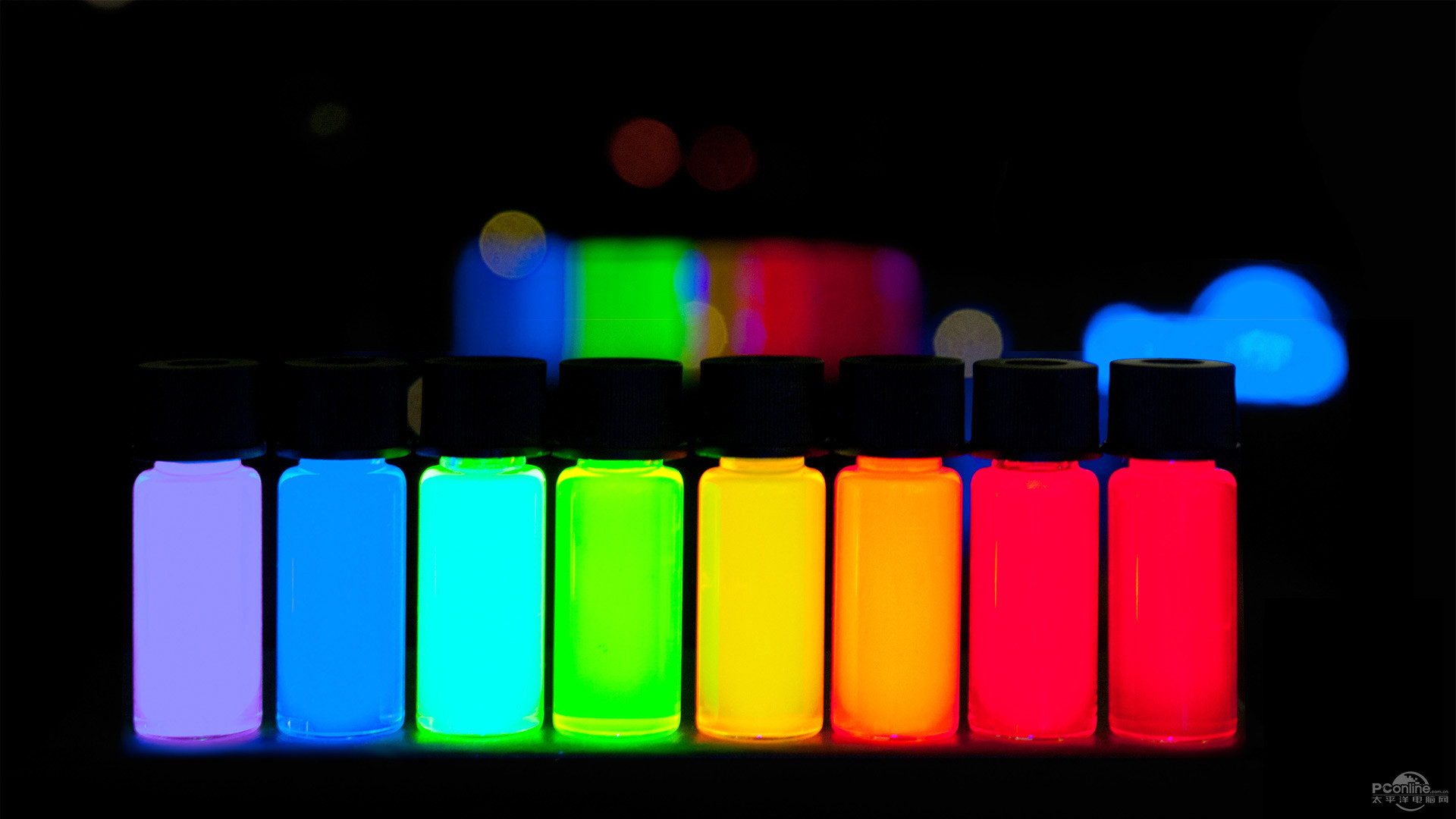
First, we need to understand what quantum dots (QDs) are. Quantum dots are very small semiconductor particles that are only a few nanometers in size and are so small that their optoelectronic properties are different from those of larger particles. The principle of luminescence is to apply stimuli to the quantum dot material by electricity or light. The material of the quantum dot will emit light of a specific frequency, and these frequencies can be changed by changing the size and shape of the quantum dot to achieve accurate tuning.
In simple terms, the photoelectric properties of quantum dots are very different from those of previous light-emitting display particles. Quantum dots are very small particles, and are measured in nanometers. As a result, the display color of quantum dots is changed by changing the size and shape of the particles. Because of this, in theory, quantum dots display more continuous and lower cost.
In fact, it is nano-sized particles. We know that many materials will have different physical and chemical properties at the nanometer level, but quantum dots will sound better.
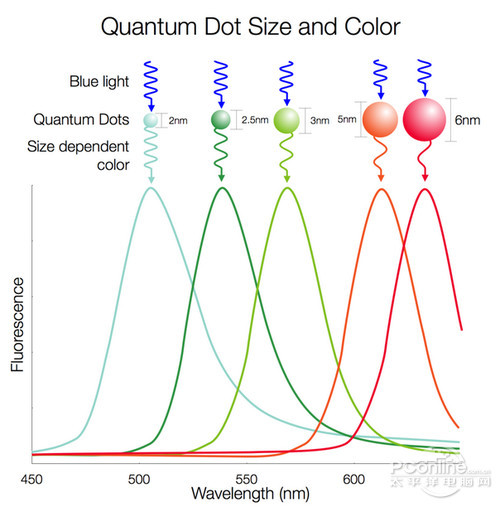
Quantum dots of different sizes will emit different colors. The quantum dots will emit colored light when stimulated by light or electricity. The color of the light is determined by the composition and size of the quantum dots. Generally, the smaller the particles, the longer the wavelengths will absorb. The larger the particles, the shorter the waves will absorb. The 2nm-sized quantum dots can absorb long-wavered red color and show blue color; 8nm-sized quantum dots can absorb short-wavelength blue color and appear red. This feature allows quantum dots to change the color of the light emitted by the light source. Compared to the original display technology, quantum dots display RGB three primary colors will be more pure.
Application of Quantum Dots on Displays
In fact, quantum dot technology is not a new technology. As early as 1983, Bell Labs scientists have studied it. Only a few years later, Mark Reed, a physicist at Yale University, officially formalized the semiconductor microchip. Named "QDs" and still in use today, this is not a new technology in the strict sense. It is only in recent years that the display giant led by Samsung has developed a keen interest in quantum dot technology.
After a good understanding of the origin and characteristics of quantum dots, let's take a look at the current application of quantum dots on displays, and what is the difference between traditional LCD displays and current OLEDs that are also very hot.
LCD panel
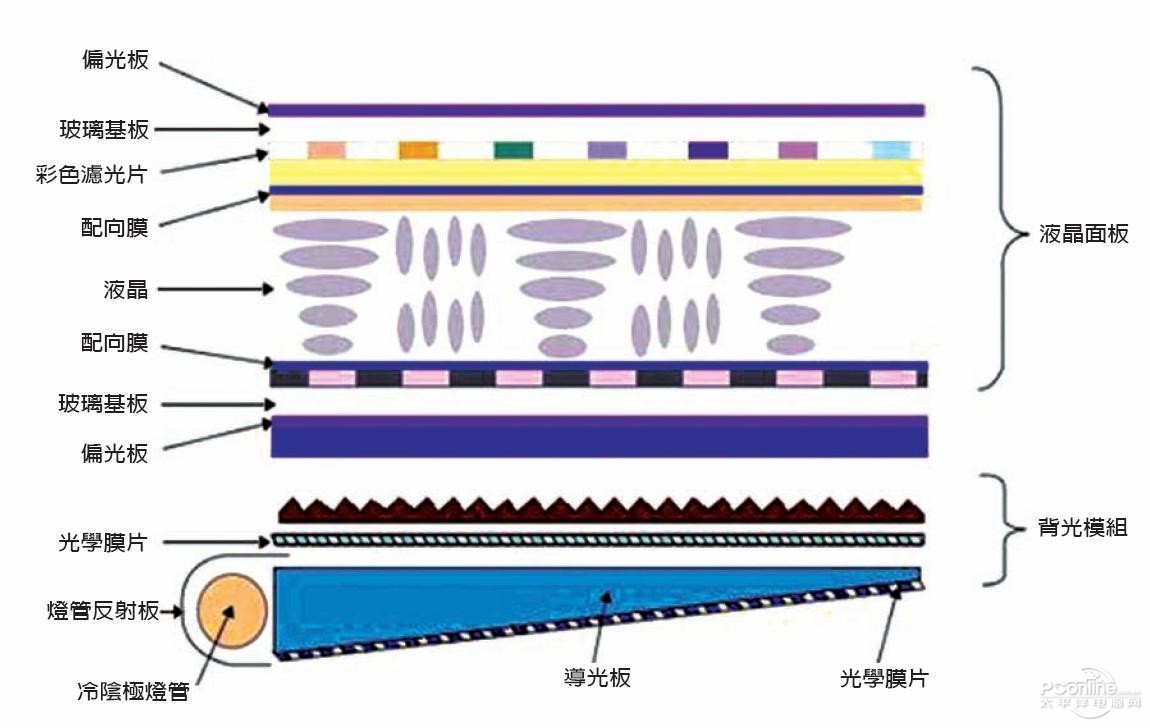
LCD panel structure
Let us first look at the long history of LCD display technology, LCD display structure is very complex, LCD structure is placed in two parallel glass substrates in the liquid crystal cell, the bottom substrate glass on the TFT (thin film transistor), the upper substrate glass A color filter is set on the TFT, and the direction of rotation of the liquid crystal molecules is controlled by changing the signal and voltage on the TFT, so as to achieve the purpose of controlling whether the polarized light of each pixel is emitted or not. According to the light source of the backlight, the LCD display is divided into two kinds of CCFL (cold cathode fluorescent lamp) and LED (light emitting diode). We generally believe that the LCD and LED are two kinds of display is wrong, is entirely the majority of manufacturers Misleading, these two are just different from the backlight light source. Of course, there is no further in-depth about the LCD panels that produce different panels.
OLED panel
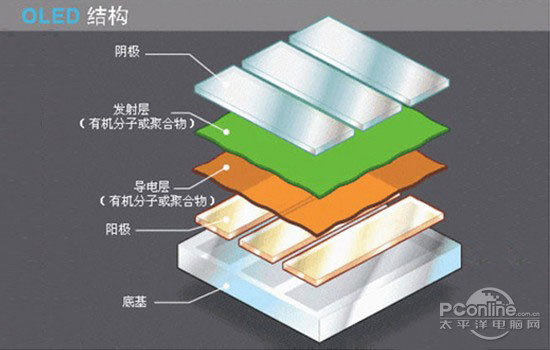
OLED panel structure
The OLED panel is different from the LCD panel. Compared to the OLED panel, the structure of the OLED panel will be simpler. The OLED is called the organic light emitting diode. That is, the light emitting material of the OLED panel is an organic material, compared to the inorganic material. Organic materials are inherently short-lived. The OLED display technology has a self-luminous characteristic, adopts a very thin organic material coating and a glass substrate. When an electric current passes through, these organic materials emit light, and the OLED display screen has a large viewing angle and can save electric energy. Because of the self-luminous properties, OLEDs perform more purely in black, because the materials display black as long as they do not emit light. At the same time, the wide viewing angle, high contrast, low power consumption, and high reaction rate are all characteristics of OLED panels.
Quantum Dot Panel
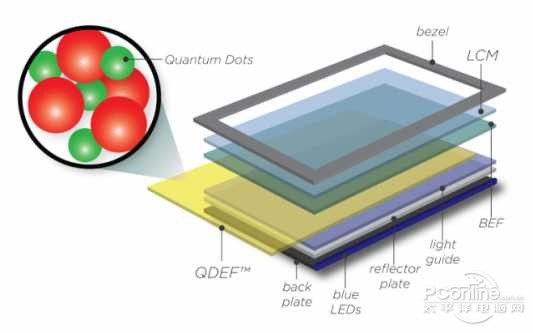
Quantum dot panel structure
Quantum dot technology we have already mentioned before, we will not continue to go into details, and now what are the differences in quantum dot display.
In fact, with regard to the current quantum dot screen, the traditional LCD panel has only changed the backlight mode. It is an extension of the LCD panel and there is no fundamental change. Popular point of view, the current quantum dot display is to add a film in the VA panel, which is the QDEF film in the picture above.
We all know that in the current LED backlighting mode, in order to show the three primary colors, there are two kinds of backlighting methods: one is to directly backlight through RGB LED lights, so that the cost is very high and no monitor is used; the second is that the current commercial displays are generally popular. Backlight mode: Pseudo white LED backlight, using the pixel phosphor color, what is a pseudo-white LED backlight, is to send a white backlight by adding yellow phosphor in the blue LED (blue LEDs in the above picture).
This is also the source of the wide-spread “blue eyes on the screen†of the Internet. However, there is a saying “Don’t talk about toxicity when you think about it.†As long as it is a monitor that meets safety standards and it is used properly, it does not The rumors that caused the network to spread, so do not worry too much about it.
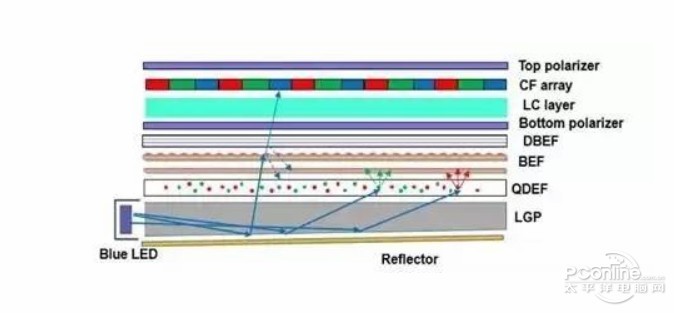
Quantum dot panel display principle
However, if the color is developed by quantum dots, there is no need for a white backlight. There are two reasons (actually it should be counted as one): For reasons of photoluminescence, blue light quantum dots cannot appear, so blue must be added to the backlight. Second, because the current quantum dots are only responsible for generating green and red light, the white LEDs in the original backlight module must be replaced with blue LEDs. at the same time
What is the actual experience of quantum dot technology in the end?
Actually, the quantum dot technology prospect is very wide, and it is not only to change the backlight mode. Quantum dot technology is advancing toward LED packaging (insulating quantum dot materials into LEDs).
The current QDEF film is not cheap. For a 55-inch TV, a QDEF offer is about $100. A large part of this is due to the need for water-blocking oxygen in the material. Quantum dots are claimed to be more stable than OLEDs in propaganda because of their inorganic nature. However, in fact, nanometer-sized quantum dots are very sensitive, not only afraid of heat like phosphors, but also As OLED is afraid of water and oxygen, it is not such a capital to boast that it is more stable than OLED. In the process of commercialization, much energy and cost are consumed in water-blocking oxygen. Taking 3M and QDS produced by Nanosys as an example, the thickness of QDEF is about 210 μm, and the upper and lower Barrier Films (110 nm) account for about half of the entire film.

Ordinary display (left) and quantum dot display (right)
What is the actual experience brought by such an expensive membrane? We also mentioned earlier that because of the special properties of quantum dot materials, light that emits near-continuous spectrum can be emitted, that is, the colors of quantum dots can be displayed more delicately, and the color gamut can be wider. This is also what many quantum dot display manufacturers strongly advocate. Actually, our evaluation room also measured the corresponding quantum dot display, and it is actually much better in color gamut than non-quantum dot display. This is also determined by the material properties of the quantum dots.
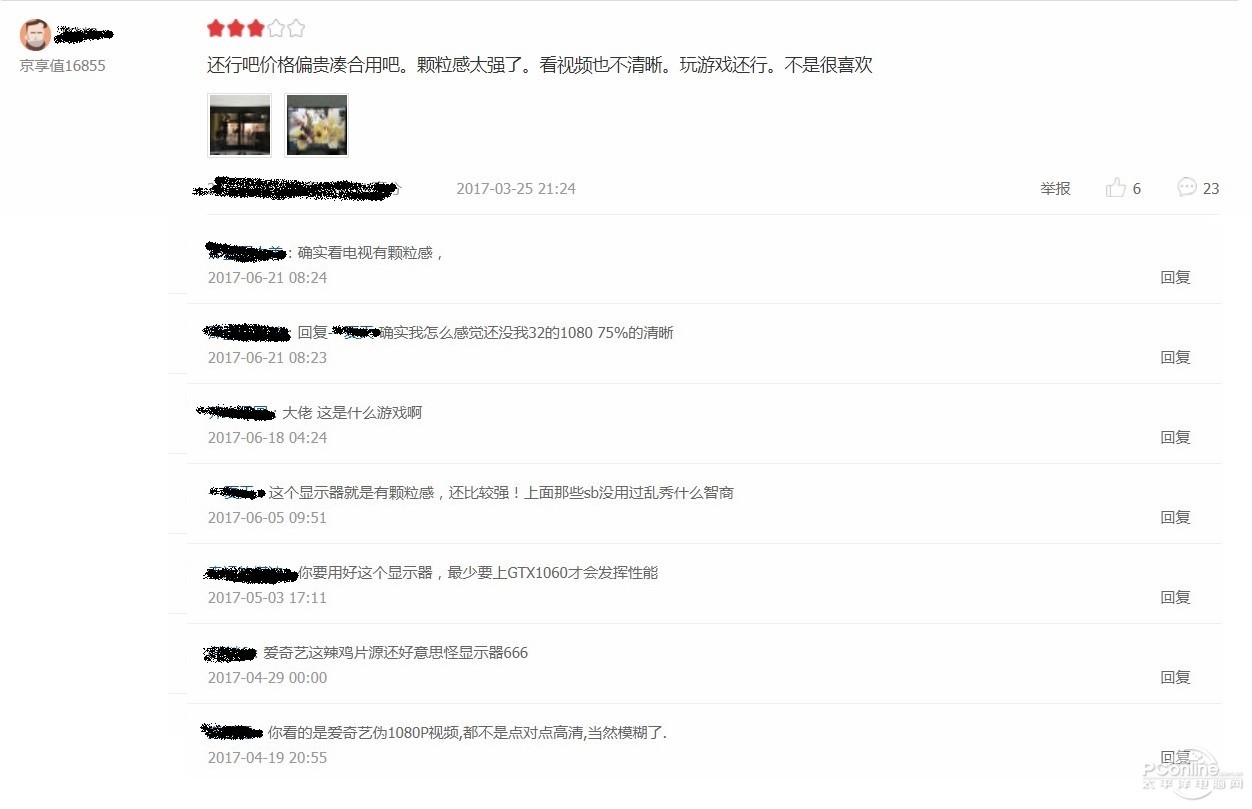
Netizen commented that a certain brand 27 inch 2K resolution quantum dot display grainy

Our website has also been authorized to reprint a QD monitor experience of a netizen.
However, we see the advantages, we must also see the shortcomings of the current quantum dot display. On an e-commerce platform, there are many netizens who found that the QD display has a very heavy graininess after purchasing the monitor. Even if the resolution of the display reaches the 2K (27 inch) level, there is still a very heavy graininess. The reason is unknown.
At the same time, because the current quantum dot technology is still an extension of the VA panel, the light leakage and color cast of the LCD panel also exist on the quantum dot display, which is currently evaded by the quantum dot backlight technology. , can only say to look at the quality control of various manufacturers.
PConline DIY old driver summary
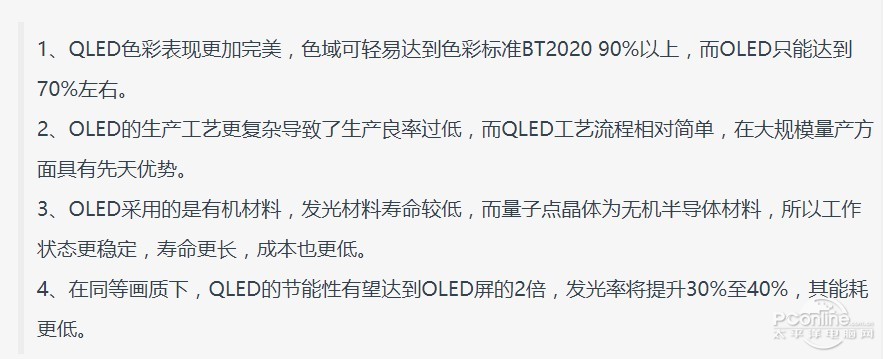
Comparison between quantum dot technology and OLED technology
So is it a good technique to talk about quantum dots? Xiao Bian seems to be a good technology. There has always been a comparison between quantum dot technology and OLED technology on the Internet. The future is certainly the PK of these two technologies. But for the current actual experience, it is not necessarily better than the mature traditional LCD panel, let alone the OLED panel.
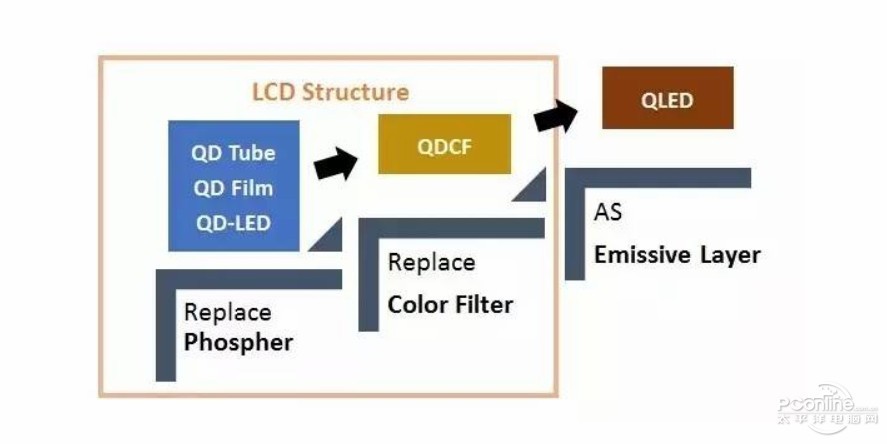
The future development direction of quantum dot technology
Of course, the current quantum dots are not particularly satisfactory, but if we look at the future of quantum dots and the direction of development, there must be a very broad space. Can be roughly divided into three stages: First, replace the traditional light-emitting phosphor; Second, remove the color filter; three officially become a light-emitting layer (that is, the current OLED pixel self-luminous form). The quantum dot technology of the future will inevitably bring fundamental changes to the display industry, even revolution, but for the time being there is still a long way to go.
Circular Connectors
Circular connectors, also called [circular interconnects," are cylindrical, multi-pin electrical connectors. These devices contain contacts that transmit both data and power. Cannon (now ITT Tech Solutions) introduced circular connectors in the 1930s for applications in military aircraft manufacturing. Today, you can find these connectors in medical devices and other environments where reliability is essential.
Circular Connectors is designed with a circular interface and housing to quickly and easily connect and disconnect signal, power, and optical circuits. Circular connectors are often preferred in military, aerospace, and industrial applications: these can be connected and disconnected without the use of coupling tools such as torque wrenches. Antenk`s circular connectors offer rugged solutions that have been engineered for reliable performance in a wide variety of harsh environment applications.
I/O connectors provide secure electrical contact and smooth, safe disconnect. They are used across a range of industries for communications devices, business equipment and computers. Top considerations when purchasing I/O connectors include pinout, gender, voltage rating, contact plating, and termination style.
Types of Circular Connectors
Circular connectors typically feature a plastic or metal shell surrounding the contacts, which are embedded in insulating material to maintain their alignment. These terminals usually pair with a cable, and this construction makes them especially resistant to environmental interference and accidental decoupling.
Circular I/O Connectors Types
Audio Connector
BNC/TNC Connector
DC POWER Connector
Mini din connector
DIN Connector
M5/M8/M12/M16/M23 PP9 Connector
SMA/SMB/FME Connector
RCA Connector
MCX MMCX Connector
Power Connector,Circular I Connectors,Circular O Connectors,Circular Power Connector,SMA/SMB/FME Connector,RCA Connector,MCX MMCX Connector,and we are specialize in Circular O Connectors,Circular Power Connector
ShenZhen Antenk Electronics Co,Ltd , https://www.pcbsocket.com